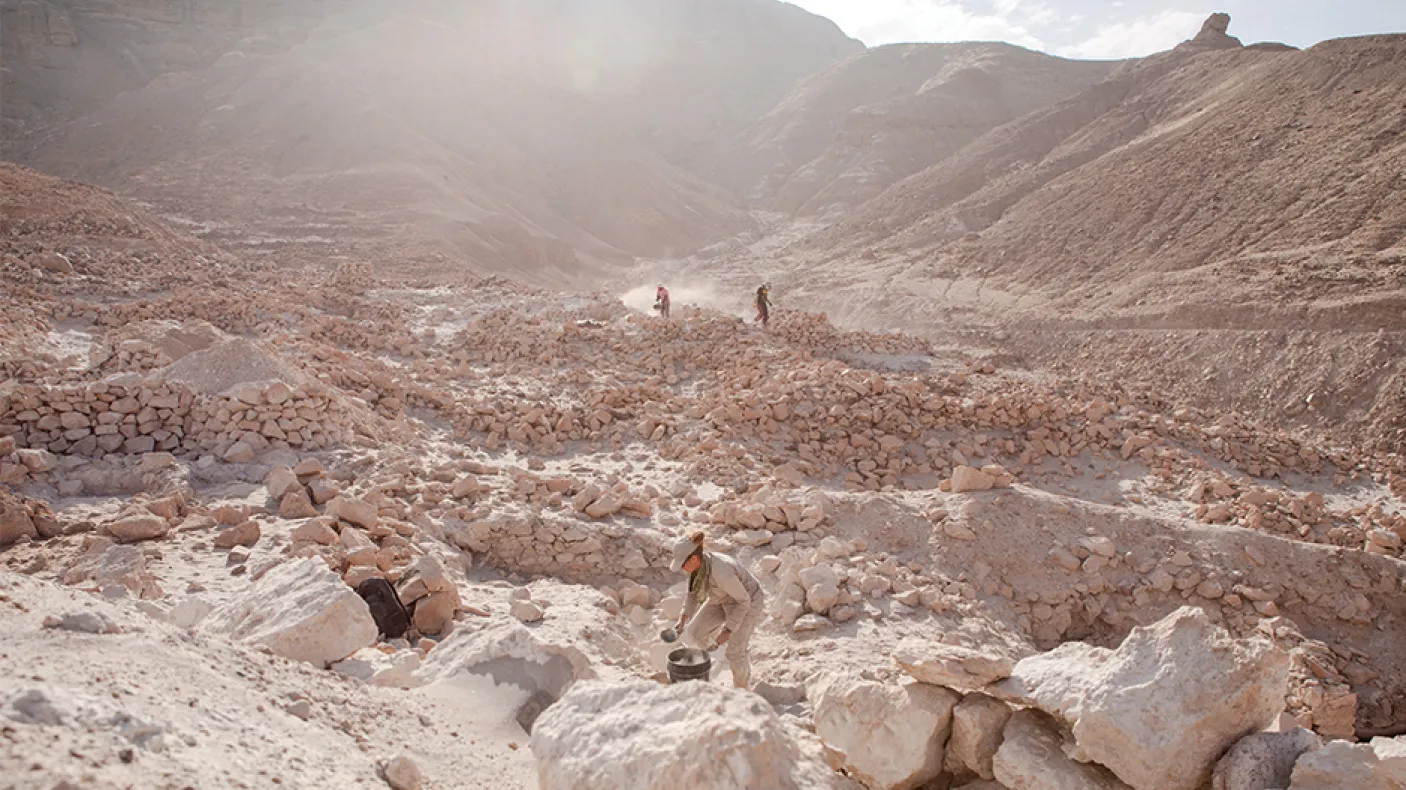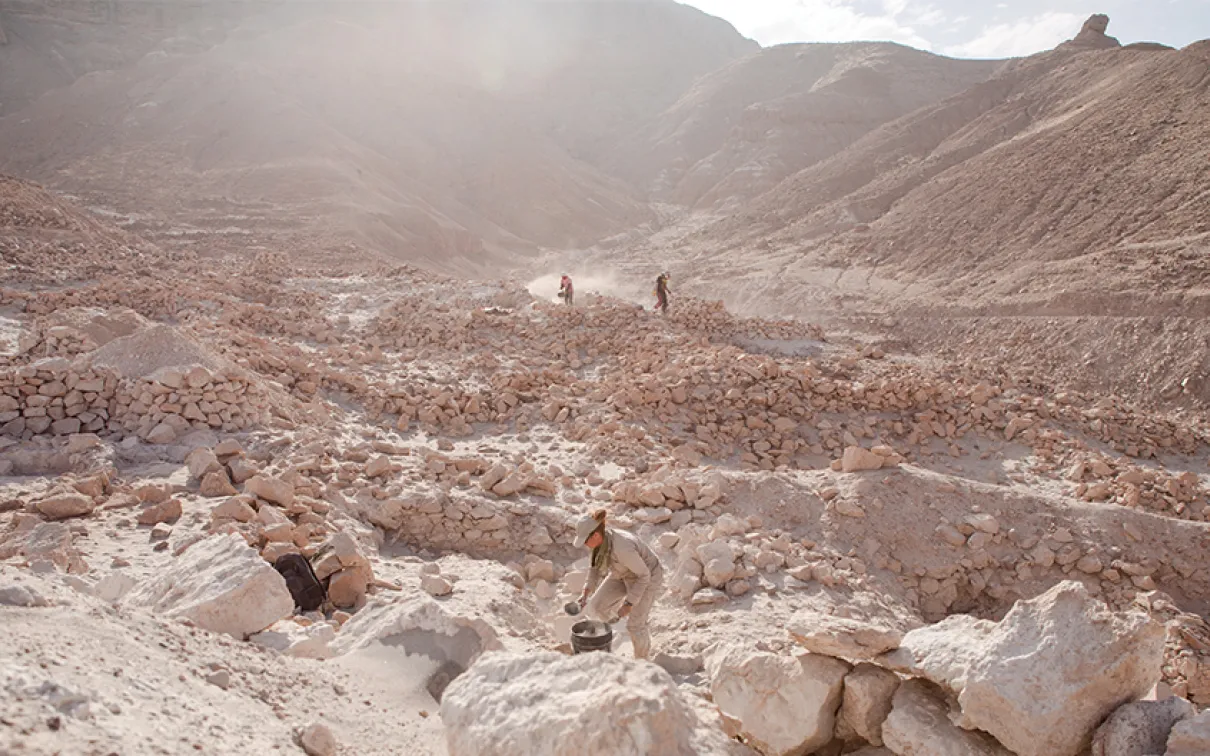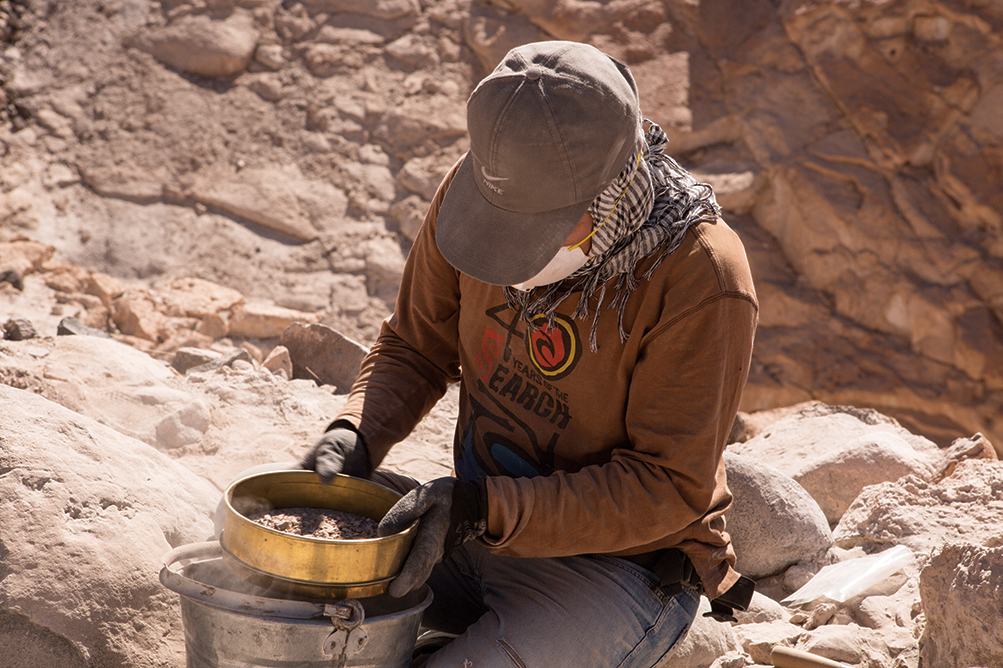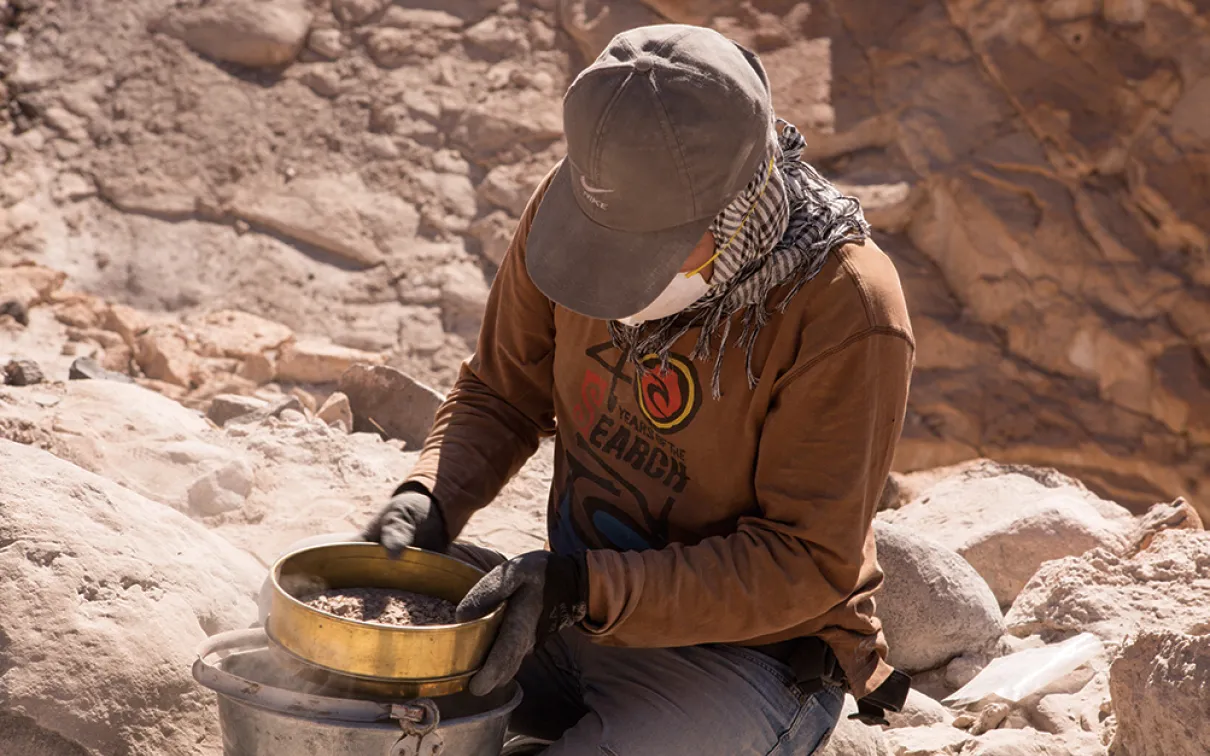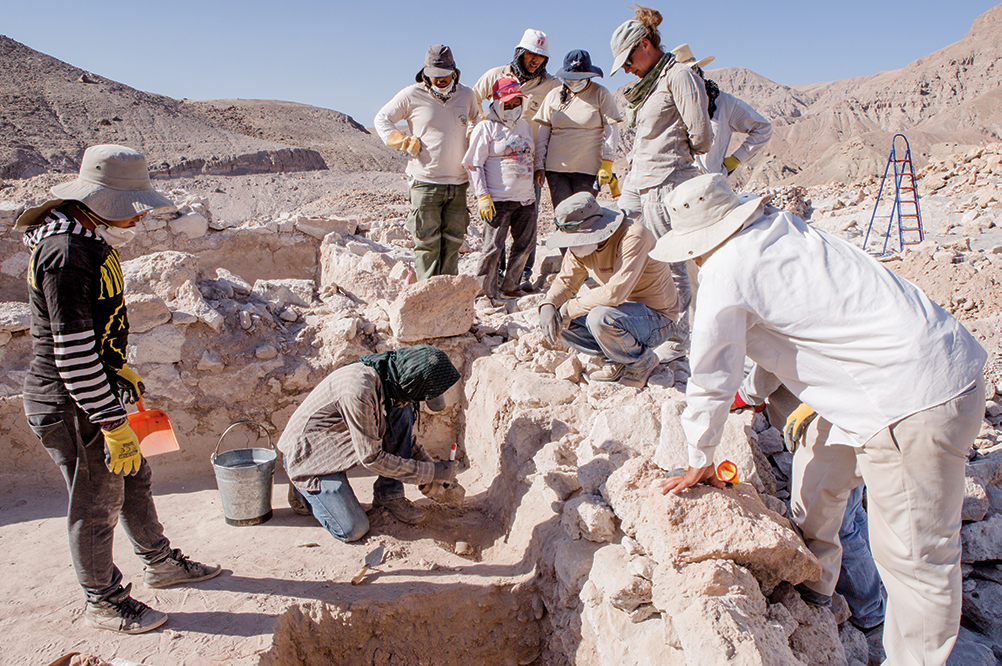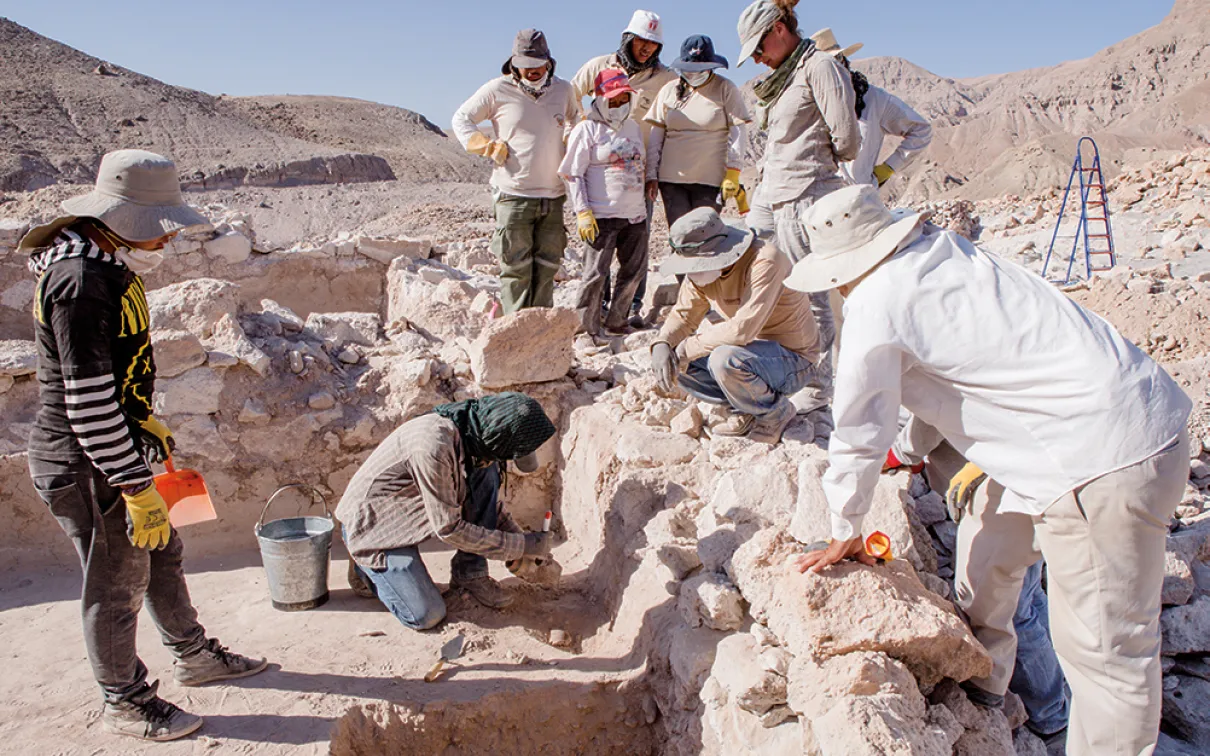On the Road
Published
Category
Sometime in the mid-ninth century AD
Sometime in the mid-ninth century AD, a llama caravan descended a narrow trail into the Sihuas Valley of southern Peru. Some of the people walking with the caravan were a thousand kilometres from home, and they were tired from a gruelling day-long hike across a sandy desert. A few people staggered under the weight of massive jars—the pots were too heavy for their llamas to carry—that featured the modelled faces of the great leaders of their culture. Dressed in colourful, finely woven textiles, animals and humans alike would have beamed with excitement as they looked down at the ribbon of fertile land below. They could finally stop running.
“Civilization” can spread through many mechanisms, including by exiled elites trying, and failing, to find a new home.
Our understanding of this caravan
Our understanding of this caravan comes from five years of ROM-directed archaeological survey, excavation, and analysis at the site of Quilcapampa. The research allows us to cobble together a plausible story of a group of relatively wealthy families leaving the heartland of the Wari state at the turn of the ninth century during a time of political turmoil. They travelled down from the highlands to the Nazca region, a location famous for the lines made in the desert by earlier inhabitants. This Wari group stayed long enough to attract a local following, and then they and their followers embarked on a months-long journey along the coast that culminated with the founding of Quilcapampa.
Gallery 1
The settlers worked hard
The settlers worked hard to create a site with imposing stone walls and an elevated plaza that sat on top of a cliff face with centuries-old petroglyphs of fantastic creatures. The Wari families’ hope was to regain their elite status by creating a society where locals provided for their needs in return for access to exotic goods and esoteric knowledge. Locals came— they helped build the site—but this was not enough, in large part because the founding families were having difficulty maintaining links to the world that they had left behind. After no more than 30 years, the site was abandoned in a ceremony that involved feasting, the sealing of rooms, and the collection of the dead. The event must have been at least tinged with melancholy; their caravan was on the move again.
The fieldwork at Quilcapampa is valuable, in part, because it captures a particular story heretofore lost in time. Yet more importantly, stories like this cut against the grain of common understandings of the spread of ancient civilizations. Wari-style ceramics and textiles could be found across much of Peru during the Middle Horizon (600–1000 AD), with dozens of reported Wari outposts located across this broad region. For more than 50 years, the prevailing interpretation is that the Middle Horizon marked the spread of an empire with Wari-style objects used as indicators of conquered lands. Our work at Quilcapampa, as well as the results from other projects, is complicating this picture. “Civilization” can spread through many mechanisms, including by exiled elites trying, and failing, to find a new home.
Justin Jennings
Justin Jennings is Senior Curator of Latin American Archaelogy at the ROM.

